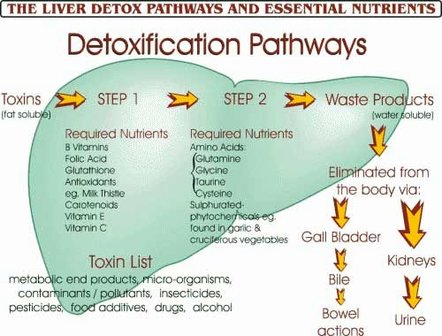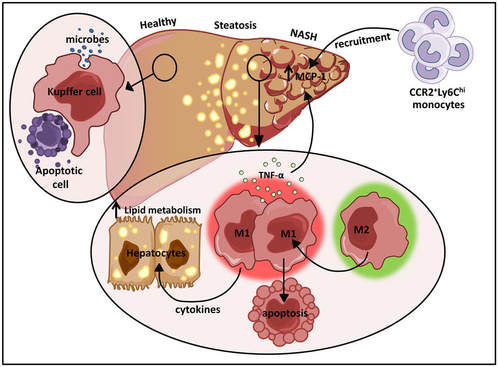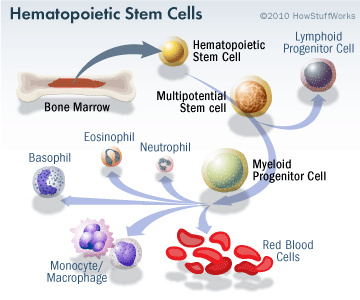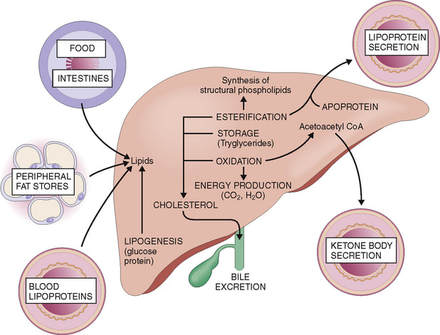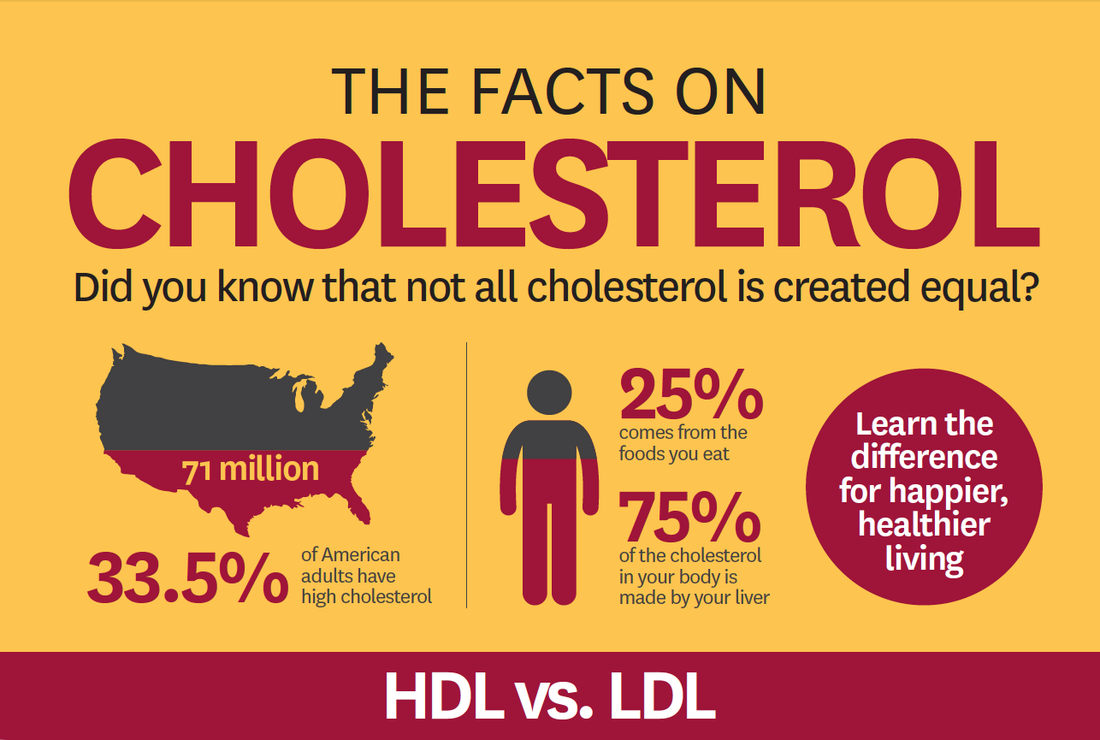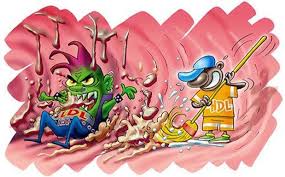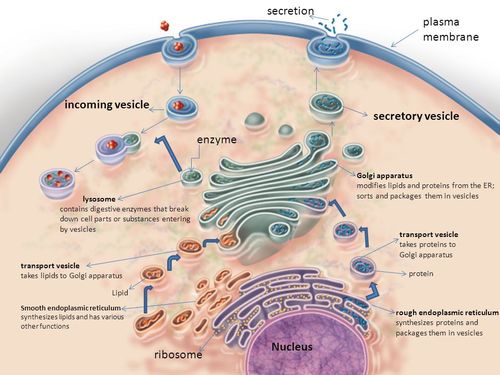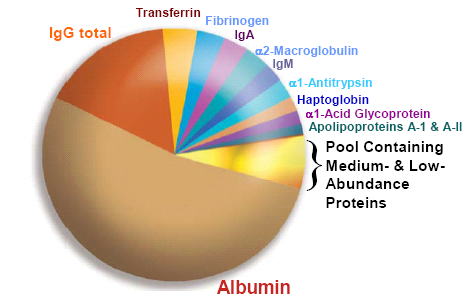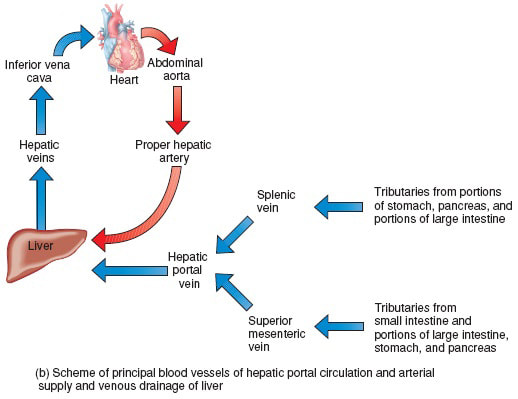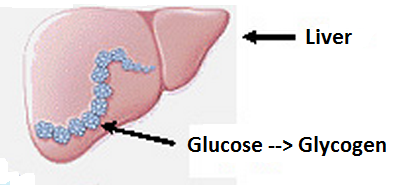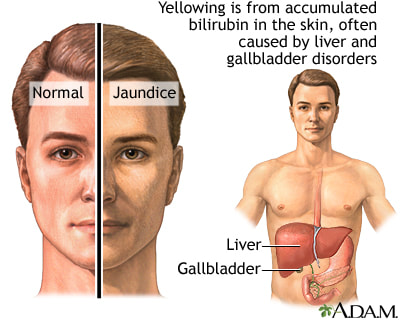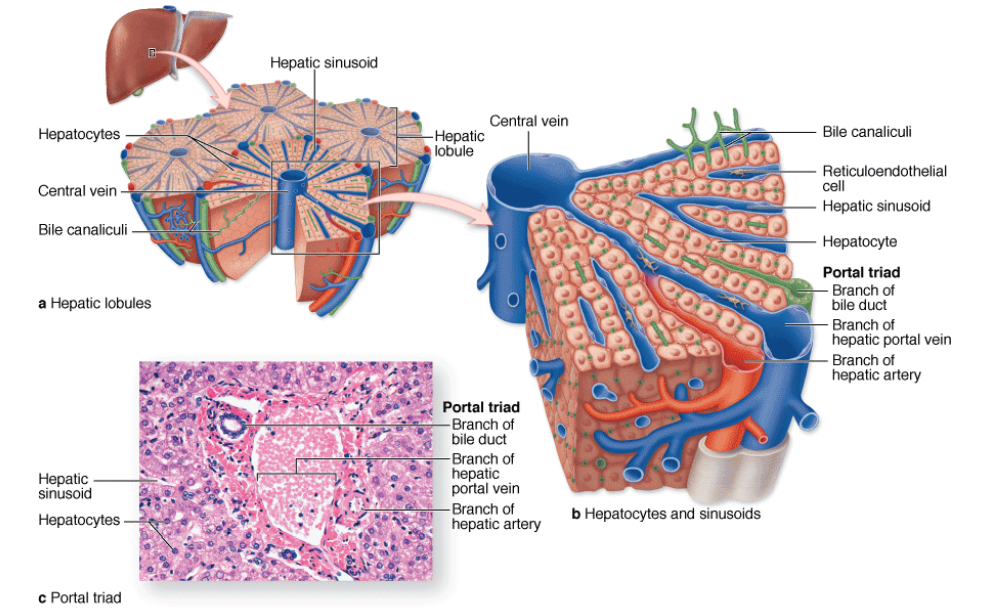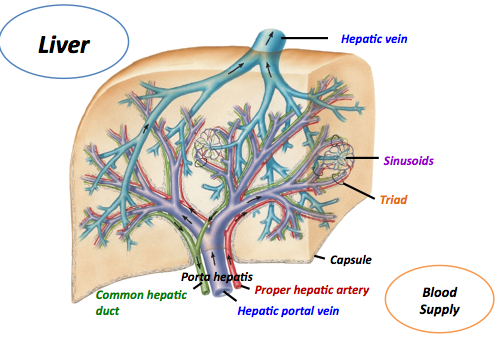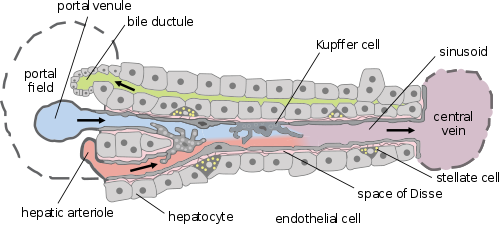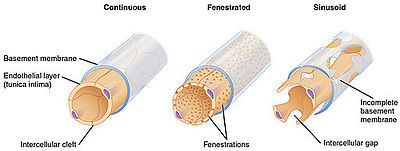D.3: Function of the Liver
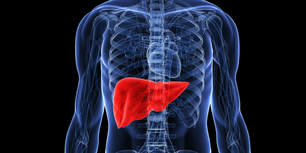 image from Huffington Post
image from Huffington Post
In the Functions of the Liver unit we will learn the structure and function of the liver. We will also investigate problems that may occur with the liver.
This unit will last 3 school days
This unit will last 3 school days
Essential idea:
- The chemical composition of the blood is regulated by the liver.
Nature of science:
- Educating the public on scientific claims—scientific studies have shown that high-density lipoprotein could be considered “good” cholesterol. (5.2)
- Compare and define LDL, HDL, IDL, VLDL and chylomicrons.
- Explain the structure of lipoproteins, including the types of molecules found in the hydrophobic core and hydrophilic surface.
- Compare and define LDL, HDL, IDL, VLDL and chylomicrons.
Understandings:
D.3 U 1 The liver removes toxins from the blood and detoxifies them. (Oxford Biology Course Companion page 684)
- Define “detoxification” as related to liver function.
- Explain the role of the liver in the detoxification of alcohol (including role of ethanol dehydrogenase).
- Outline the role of the liver in the detoxification of ammonia (and formation of urea).
The liver acts as the main biochemical synthesizer and detoxifying organ. It's responsible for cleaning toxins and wastes from the blood, and separating out the useful nutrients to synthesize hundreds of biochemicals that the body needs for daily functioning.
The liver detoxifies harmful substances in two steps.
The liver detoxifies harmful substances in two steps.
- enzymes and oxygen are used to burn toxins, especially fatty ones, so they are more water soluble, making them easier for the body to eliminate.
- combines partially processed toxins with sulfur or amino acids so they can be removed through bile or urine.
D.3 U 2 Components of red blood cells are recycled by the liver. (Oxford Biology Course Companion page 680)
- State the length of a typical red blood cell life span.
The typical lifespan of an erythrocyte (RBC) in an adult is about 120 days. Old and damaged RBC’s undergo
changes in plasma membrane which makes them susceptible to recognition by macrophages. RBC’s are removed form circulation and broken down in the spleen and liver. Liver breakdowns erythrocytes and hemoglobin and most products are recycled..
changes in plasma membrane which makes them susceptible to recognition by macrophages. RBC’s are removed form circulation and broken down in the spleen and liver. Liver breakdowns erythrocytes and hemoglobin and most products are recycled..
D.3 U 3 The breakdown of erythrocytes starts with phagocytosis of red blood cells by Kupffer cells. (Oxford Biology Course Companion page 680)
- Explain how the structure of Kupffer cells fits their endosymbiosis function.
- Create a flowchart to illustrate the steps and products of the splitting of hemoglobin
The breakdown of erythrocytes starts with phagocytosis of red blood cells by Kupffer cells. As RBC age, they swell and some are engulfed by Kupffer cells, which are macrophages which linen the sinusoids in the liver.
Inside the Kupffer cell, the hemoglobin molecule is split into globin chains and a heme group
.
Amino acids form the globin chain are recycled, while heme group is further broken down into iron and bilirubin
Inside the Kupffer cell, the hemoglobin molecule is split into globin chains and a heme group
.
Amino acids form the globin chain are recycled, while heme group is further broken down into iron and bilirubin
D.3 U 4 Iron is carried to the bone marrow to produce hemoglobin in new red blood cells. (Oxford Biology Course Companion page 680)
- Explain how and why iron is transported to the bone marrow bound to transferrin.
- List three anatomical structures that have transferrin receptors on their cell membranes.
- Outline the storage of iron in the liver and spleen (including the role of ferritin).
Hemoglobin is synthesized in red blood cells, and iron is added to the heme group. Iron is essential for red blood cell function as it is a component of the hemoglobin molecule but it is toxic at high concentrations. The released iron must be complexed within a protein in order to avoid oxidation to a ferric state. Iron can be stored by the liver within a protein shell of ferritin. Iron can be transported to the bone marrow (where new haemoglobin is produced) within the protein transferrin
D.3 U 5 Surplus cholesterol is converted to bile salts (Oxford Biology Course Companion page 682).
- Outline the roles of hepatocytes in the conversion of excess cholesterol into a component of bile.
- Explain the synthesis of VLDL cholesterol by hepatocytes for transport of triglycerides.
- Describe how the amount of saturated fat in a diet affects the amount of VLDL cholesterol synthesis by the liver.
The liver is central to the regulation of cholesterol levels in the body. Not only does it synthesize cholesterol for export to other cells, but it also removes cholesterol from the body by converting it to bile salts and putting it into the bile where it can be eliminated in the feces. Furthermore, the liver synthesizes the various lipoproteins involved in transporting cholesterol and other lipids throughout the body. Cholesterol synthesis in the liver is under negative feedback regulation
D.3 U 6 Endoplasmic reticulum and Golgi apparatus in hepatocytes produce plasma proteins. (Oxford Biology Course Companion page 683).
- Define and list examples of “plasma proteins.”
- Explain why hepatocytes have a lot of RER and Golgi.
The rough ER of hepatocytes produce 90% of the proteins in blood plasma, including fibrinogen and albumin. Albumin is a carrier protein that binds to bilirubin and helps maintain osmotic balance in the blood. Fibrogen is essential for clotting.. Hepatocytes cells show extensive networks of ER and Golgi body which provides evidence of high levels of protein synthesis. Estimated that 13 million ribosomes attached to ER of a liver cell.
D.3 U 7 The liver intercepts blood from the gut to regulate nutrient levels (Oxford Biology Course Companion page 679)
- Explain the storage and release of glucose (including the role of glycogen, insulin and glucagon).
- Outline the role of the liver in protein metabolism (and resulting nitrogenous waste formation).
One main function of liver is to regulate quantity of nutrients circulating in the blood. Key role
in glucose, it can store glucose as glycogen or break down glycogen to glucose.
in glucose, it can store glucose as glycogen or break down glycogen to glucose.
- Body can’t store proteins or amino acids, excess quantities in diet are broken down in liver to
- be utilized as energy sources.
- Waste product produced is nitrogenous waste.
- Liver also manages circulating lipids. Lipids come in many forms: Chylomicrons arrive from intestines and need to be broken down. Very low density lipoproteins (VLDL) are synthesized by hepatocytes which transport the triglycerides synthesized in liver into blood plasma for storage and use. Cholesterol in surplus is converted into bile salts.
D.3 U 8 Some nutrients in excess can be stored in the liver. (Oxford Biology Course Companion page 679).
- List four example nutrients that can be stored by the liver.
If glucose level is high, insulin is released and stimulates hepatocytes to take up glucose and store it as glycogen. When levels fall, hormones such as glucagen is released and result is breakdown of glycogen, glycerol, amino acids and fatty acids in liver releasing glucose to the blood stream.
Nutrients stored in the liver
Nutrients stored in the liver
- glycogen
- iron
- vitamin A
- vitamin D
Application
D.3 A 1 Causes and consequences of jaundice. (Oxford Biology Course Companion page 681
- Outline the function and source of bilirubin.
- Explain the role of hepatocytes and glucuronic acid in the conversion of bilirubin.
- List components of bile.
- Outline the role of bile ducts and gall bladder in the transport and storage of bile.
- Describe when, where and why bile is secreted during digestion.
- Define and list causes and symptoms of jaundice.
- Describe the use of UV light as a treatment for jaundice.
Old red blood cells travel to the liver, where they’re broken down. Bilirubin is the yellow pigment formed by the breakdown of these old cells. Jaundice occurs when your liver doesn’t metabolize bilirubin the way it’s supposed to. The liver might be damaged and unable to perform this process. Sometimes, the bilirubin simply can’t make it to the digestive tract, where it normally would be removed through the stool. In other cases, there may be too much bilirubin trying to enter the liver at once, or too many red blood cells dying at one time. Yellow-tinted skin and eyes characterize jaundice. In more severe cases, the whites of your eyes may turn brown or orange colored.
Phototherapy (light treatment) is the process of using light to eliminate bilirubin in the blood. The skin and blood absorb these light waves. These light waves change bilirubin into products, which can pass through the system.
Phototherapy (light treatment) is the process of using light to eliminate bilirubin in the blood. The skin and blood absorb these light waves. These light waves change bilirubin into products, which can pass through the system.
D.3 A 2 Dual blood supply to the liver and differences between sinusoids and capillaries. (Oxford Biology Course Companion page 678)
- Draw and label a diagram of the liver, including the left and right lobes, hepatic portal vein, hepatic artery and the hepatic vein.
- Compare liver blood supplies in terms of blood source (arrives from…), blood destination (flows towards…), and relative oxygen concentration.
- Draw a labeled diagram of a sinusoid, inclusive of: bile canal cells, bile duct, hepatocytes, Kupffer cells, arterioles and venules.
- Compare sinusoids to capillaries.
- Outline the relationship between liver lobes, lobules and sinusoids.
The liver receives a dual blood supply from the portal vein and hepatic arteries. The hepatic portal vein supplies 75% of the liver's blood supply by volume and carries venous blood drained from the spleen, gastrointestinal tract, and its associated organs .The hepatic arteries supply arterial blood to the liver and account for the remainder of its blood flow (hence oxygen rich and nutrient poor). The hepatic arterial system supplies the biliary system. Oxygen is provided from both sources; approximately half of the liver's oxygen demand is met by the hepatic portal vein, and half is met by the hepatic arteries.
Sinusoidal are a special type of fenestrated capillaries that have larger openings (30-40 μm in diameter) in the endothelium. These types of blood vessels allow red and white blood cells and various serum proteins to pass. Sinusoid blood vessels are primarily located in the bone marrow, lymph nodes, and adrenal gland. Some sinusoids are special, in that they do not have the tight junctions between cells. They are called discontinuous sinusoidal capillaries, and are present in the liver and spleen where greater movement of cells and materials is necessary.
Sinusoidal are a special type of fenestrated capillaries that have larger openings (30-40 μm in diameter) in the endothelium. These types of blood vessels allow red and white blood cells and various serum proteins to pass. Sinusoid blood vessels are primarily located in the bone marrow, lymph nodes, and adrenal gland. Some sinusoids are special, in that they do not have the tight junctions between cells. They are called discontinuous sinusoidal capillaries, and are present in the liver and spleen where greater movement of cells and materials is necessary.
Key Terms
|
liver
red blood cell hemoglobin cholesterol saturated fat glycogen jaundice sinusoid venules IDL microvilli heme |
detoxification
erythrocytes iron bile salts plasma proteins insulin glucuronic acid bile canal cells liver lobes chylomicrons interlobular vein ferritin |
ethanol dehydrogenase
Kupffer cells bone marrow VLDL cholesterol endoplasmic reticulum bilirubin gall bladder hepatic portal vein lobules lipoproteins gut albumin |
ammonia
phagocytosis transferrin hepatocytes Golgi apparatus glucagon hepatic artery bile duct LDL hydrophobic retinol |
urea
endosymbiosis spleen triglycerides glucose nutrients hepatic vein arterioles HDL hydrophilic calciferol |
Your browser does not support viewing this document. Click here to download the document.
Your browser does not support viewing this document. Click here to download the document.
Correct use of terminology is a key skill in Biology. It is essential to use key terms correctly when communicating your understanding, particularly in assessments. Use the quizlet flashcards or other tools such as learn, scatter, space race, speller and test to help you master the vocabulary.
Useful Links
Secretion of bile and the role of bile acids
3D liver animation and brief outline of its functions from HealthLine.
Introduction to liver functions from Encyclopedia Britannica
Flashy introduction, then focuses on liver cancer from the CancerCompass.com
Tutorial with simple animation of bile secretion from Colorado State
EM images from Dr. Jastrow’s EM Atlas
Histology set of specialized cells of the GI system from Siumed
In The News
The Liver: A ‘Blob’ That Runs the Body - New York Times, Jun 2017
Scientists develop lab-based system to study mechanisms of common liver disease - News Medical, May 2018
The Liver: A ‘Blob’ That Runs the Body - New York Times, Jun 2017
Scientists develop lab-based system to study mechanisms of common liver disease - News Medical, May 2018
TOK
- Excessive alcohol consumption may cause liver cirrhosis. Are attitudes to drugs and alcohol an example of something that is relative to culture? Is all knowledge dependent on culture?
Video Clips
Liver anatomy and function
There’s a factory inside you that weighs about 1.4 kilograms and runs for 24 hours a day. It’s your liver: the heaviest organ in your body, which simultaneously acts as a storehouse, a manufacturing hub, and a processing plant. Emma Bryce gives a crash course on the liver and how it helps keep us alive.
The liver is the largest organ in the body. Liver tissue is composed of a compact mass of multisided units, known as the hepatic lobules
What is cirrhosis? Cirrhosis describes the process of irreversible scarring and fibrosis of the liver tissue.
Learn why jaundiced babies have yellowish skin and eyes for the first few days after they're born and how the ancient Greeks thought birds could help cure the affliction
